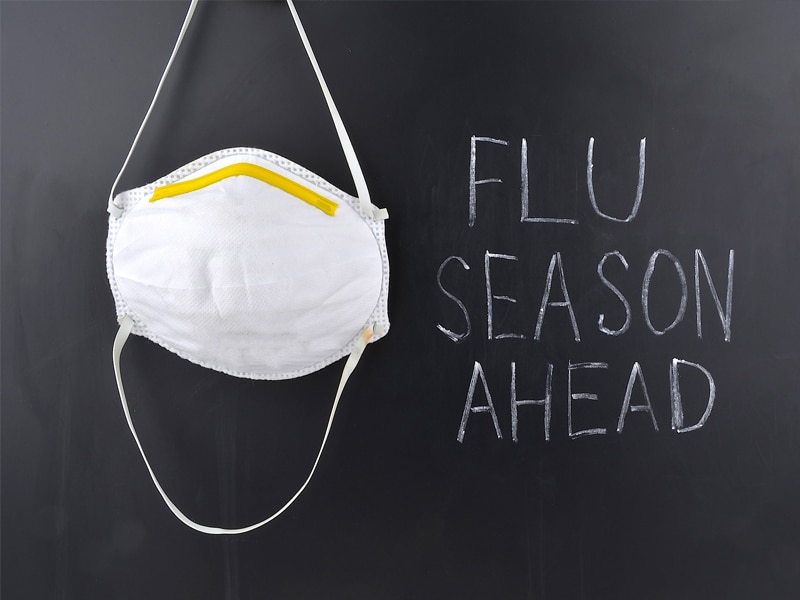The COVID-19 pandemic may be top of mind, but another dangerous respiratory illness — the flu — will soon start circulating in earnest. Learn what you can do to prepare for the flu season.
The flu is always around, but cases increase in the fall, peak between December and February, and slack off in the spring, according to the Centers for Disease Control and Prevention (CDC). To prevent flu season from catching you off guard, you can:
1. Get a flu shot before the flu season takes off
The CDC recommends getting a flu shot before the end of October. Your body needs about two weeks after you get the shot to start forming protective antibodies, so if you get vaccinated in early fall, your immune system will be ready by the time the flu season is raging.
2. Eat for your immune system
Include foods in your diet that feature immune system-supporting nutrients. You can find vitamin C in bell peppers and broccoli, protein in lean meat, eggs, and beans. Additionally, vitamin D is abundant in fortified cereals and dairy products, and beta-carotene can be found in tomatoes and sweet potatoes.
3. Move more
Exercise can help rid the lungs of germs, help antibodies move faster through the blood, and reduce stress hormones, according to the U.S. National Library of Medicine.
4. Get in a good hygiene groove
If you start practicing preventive steps now—such as washing hands often, not touching your face, and sanitizing frequently touched objects and surfaces—they’ll be second nature by flu season.
LET THE DEEP CLEAN BEGIN
If someone in your home comes down with a respiratory illness, such as the flu or COVID-19, it’s important to clean and disinfect frequently touched objects and surfaces as soon as possible to reduce the chances of others getting sick. What’s the difference between cleaning and disinfecting? The former removes dirt and some, but not all, germs from a surface, and the latter kills germs, according to the CDC.
The CDC recommends regularly cleaning surfaces with soap and water, then using an Environmental Protection Agency-registered disinfectant or a diluted bleach solution to disinfect. Don’t miss these germ hotspots:
- Cell phones (an alcohol-based wipe may be best)
- Desks and tabletops
- Door knobs and cabinet knobs or handles
- Faucets
- Keyboards
- Kitchen and bathroom counters
- Light switches
- Refrigerator and microwave door handles
- Remotes
- Sink faucets
- Toilets
Be sure to follow product instructions carefully, as some disinfectants and bleaches may not be appropriate for certain surfaces. Also, never mix products, as dangerous fumes may result.
Learn the differences between COVID-19, the flu, and the common cold.

